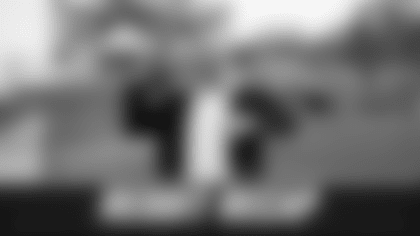Dan Riley's strength and conditioning program knows no offseason. He expects a high-level work ethic year-around.
Dan Riley doesn't believe in exotic offseason training programs. In fact, the Texans strength and conditioning coach doesn't have one. Whether in-season or offseason, the work is the same.
"Our in-season strength program mirrors our offseason program," Riley said. "It lacks logic for an athlete to do something in the offseason and stop doing it when we start training camp when he needs to be strongest.
"So, an athlete's in-season program is the whole program."
Riley recalled a player getting magazine publicity because he pushed a car as part of his offseason workouts.
"Well, he doesn't do that once the season starts," Riley said. "He doesn't do that during the season. It's done periodically and not for the meat and potatoes. It's done for the magazine or whatever."
Riley gets little complaint from his players. He's been in the business 26 years and commands the respect of young and old Texans.
He built the Washington Redskins strength program under Joe Gibbs. He got John Riggins to buy into his methods. Riley helped bolster the Redskins' famous Hogs offensive line and he's got three Super Bowl rings to prove his methods work.
Riley believes some teams err by having one kind of strength program in the offseason and another for the season.
"Players are doing all those wacky things during the season." Riley said. "The time and energy is extremely valuable for a player to recover between games and practices.
"So, any exercise that's added, it better be a productive exercise and not wasting a player's time and energy. The season is so long and strength is lost so rapidly, we teach our players that the time to be your strongest is now until the end of the season."
Defensive end Mario Williams, the Texans' No. 1 draft pick last season, learned Riley's value when he suffered a foot injury in the fifth game of the season. With Riley's help, Williams finished the season on the field despite the pain.
"He had me out here running and pushing me through every drill, go, go, go. He's kept my motor running," Williams said. "With my foot thing, he was still trying to get me stronger and he took care of the foot at the same time."
Riley's experience reaches back to a time when strength training wasn't valued.
"When I first got into the business at the college level, strength training wasn't accepted," Riley said. "Coaches didn't want their players lifting weights because they feared they'd become muscle-bound."
Riley was strength and conditioning coach at the U.S. Military Academy and at Penn State before moving to the Redskins in 1982.
"In 1972, I went to grad school in Indiana. Lee Corso was the coach and they didn't have a strength program," Riley said. "I went to Penn State in 1977 and started a strength program."
Riley got a shock early on with the Redskins.
"In 1982, I got to the Redskins and I remember my first preseason game I walked into the locker room and a player was smoking a cigarette," Riley said. "I said, 'what are you doing?' I got that look like, 'You better get out of my space,' and I did.
"Players were just starting to strength train back then. Times have changed. Now, it's become an accepted part of the process."
{QUOTE}Rookie safety Brandon Harrison thought he worked hard at Stanford. He learned new approaches with Riley.
"He emphasized how important it is to be your strongest during the season, not necessarily during the offseason," Harrison said. "He pushed it hard in the offseason and I got through the fatigue."
Harrison found it more natural to work harder in the offseason with no game-day preparation.
"You start to work out in the offseason and want to see how strong you are and how much you can bench," Harrison said. "Then, a lot of times you take it easier during the season trying to keep your body fresh.
"His whole mentality of being strongest during the season is something that I'd never thought about."
Riley explains to new players what he's all about.
"They've all experienced getting strong and losing strength," Riley said. "We tell them every year if you put a cast on your arm, in 19 ½ hours your muscles start to lose strength and atrophy. That's with no injury."
Riley also explains the need for maximum effort.
"If a player can lift 200 pounds 10 times and then he comes into the weight room and lifts 180 pounds 10 times, he'll rapidly lose strength until he reduces his strength to that level," Riley said.
"Atrophy happens rapidly. Without a near maximum effort every time they lift, they know they'll lose strength."
Riley believes his system is best for a football player.
"It's the safest and produces the best results in the least amount of time and consumes the least amount of their energy," Riley said. "It expedites the rehab process. It sells itself if a player will commit to what we do."
Riley calls the Texans his hardest-working group.
"They know what it takes. It's not easy, but they know what it takes," he said.
Riley can't measure the exact effects of less than maximum effort.
"At what point does it make them more vulnerable to injury, allow them to perform at a lower level, decrease the ability to recover between games, we don't know," Riley said.
"We do know our season is 22 weeks long from the first day of training camp to end of the regular season and add five weeks if you go to the Super Bowl. It's a terribly long process."
EDITOR'S NOTE: Michael A. Lutz worked for The Associated Press for 38 years covering news and sports in Louisville, Ky. Dallas and Houston. Most of that time was spent in Houston covering the Oilers, Astros, Texans and other college and pro sports.














